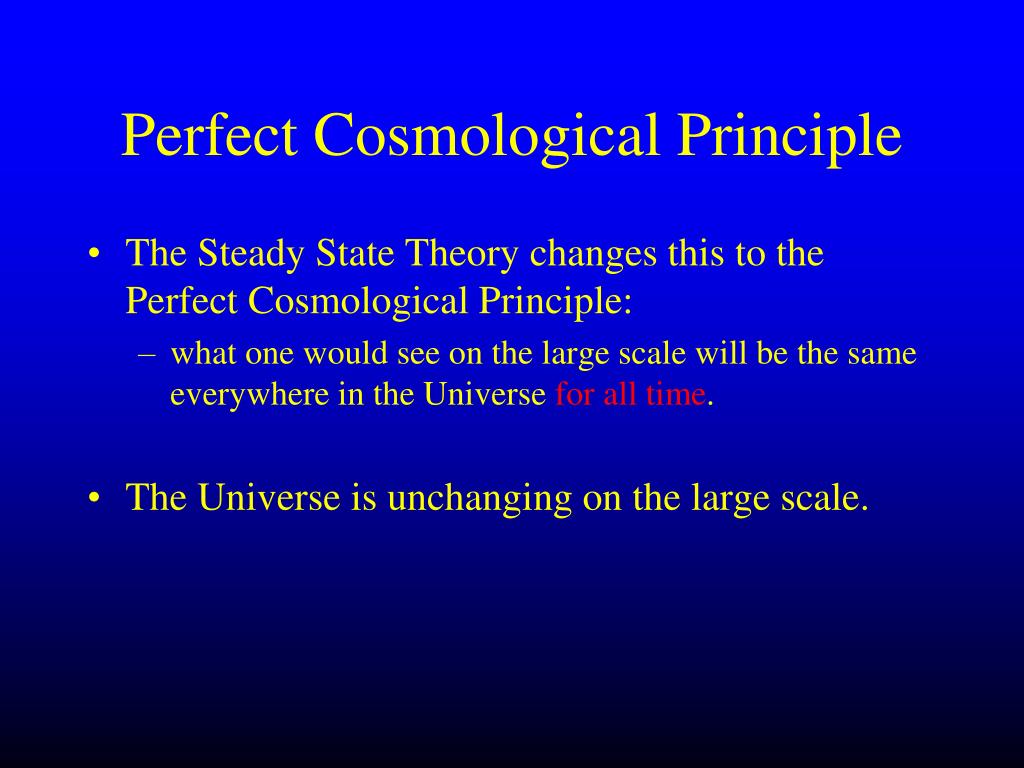


The Doppler effect is a fundamental feature of measurements in astrophysics.

The first implicit qualification is that "observers" means any observer at any location in the universe, not simply any human observer at any location on Earth: as Andrew Liddle puts it, "the cosmological principle the universe looks the same whoever and wherever you are. The cosmological principle is a keystone of cosmology that ensures that we do not have to worry about bias due to the place of the earth in the universe. The second assumption, called the cosmological principle, states that an observer’s view of the universe depends neither on the direction in which he looks nor on. the hypothesis that the universe is isotropic and homogeneous on a large scale: used to simplify the equations of general relativity for models of the universe. The first is that Albert Einstein ’s general theory of relativity correctly describes the gravitational interaction of all matter. The cosmological principle contains three implicit qualifications and two testable consequences. The big-bang model is based on two assumptions. In essence, this in a sense says that the Universe is knowable and is playing fair with scientists. The cosmological principle is usually stated formally as 'Viewed on a sufficiently large scale, the properties of the Universe are the same for all observers.' This amounts to the strongly philosophical statement that the part of the Universe which we can see is a fair sample, and that the same physical laws apply throughout. The expansion of the universe is defined in a quantity. This is called the Cosmological Principle. Note that we are dealing with isotropic and homogeneous universe here, so there is no peculiar velocity. That is, the matter in the universe is homogeneous and isotropic when averaged over very large scales. In modern physical cosmology, the cosmological principle is the dynamical structure principle that falls from the working assumption that the distribution of matter in the universe is homogeneous and isotropic when viewed on a large enough scale, since the forces are expected to act uniformly throughout the universe, and should, therefore, produce no observable irregularities in the large scale structuring over the course of evolution of the matter field that was initially laid down by the big bang. The simplest assumption to make is that if you viewed the contents of the universe with sufficiently poor vision, it would appear roughly the same everywhere and in every direction. Freebase Rate this definition: 0.0 / 0 votes


 0 kommentar(er)
0 kommentar(er)
